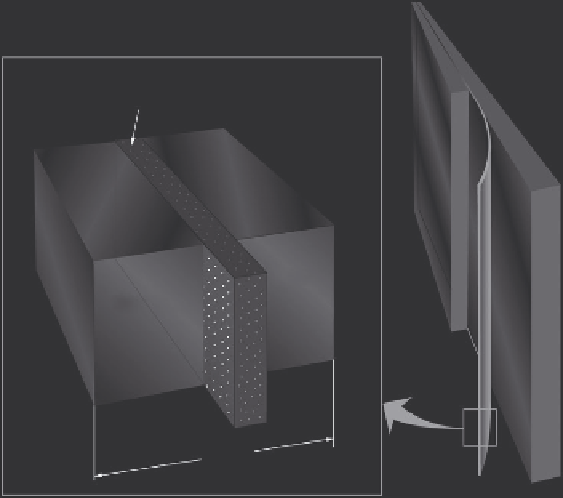Civil Engineering Reference
In-Depth Information
form, generally referred to as VO
2
(B), can be produced by chemical tech-
niques and is of much contemporary interest for electrical batteries; this
material can be transformed into thermochromic VO
2
. Furthermore VO
2
can be made by oxidation of metallic vanadium and by reduction of V
2
O
5
.
Recent data are available also for vanadium dioxide nanoparticles doped
with tungsten (Ye
et al.
, 2010) and Mo (Chen
et al.
, 2010); the relevance of
this doping will be explained in Section 11.3.4 below.
The nanoparticle composites can be useful in several ways and may be
incorporated in polymer foils or laminates for practical low-cost thermo-
chromic glazing as indicated in Fig. 11.9. Another possible application is in
composites of VO
2
and an oxide such as ITO (see Section 11.2.4), where
the latter component can impart a low thermal emittance (Li
et al.
, 2011b).
11.3.3 Mg-doped VO
2
fi lms with enhanced
luminous transmittance
The luminous absorptance of VO
2
is undesirably high, and Fig. 11.6 showed
that
T
(
λ
) dropped distinctly at
λ
<
0.6
μ
m for a fi lm thickness as small as
0.05
μ
m. This property can be understood as an effect of band-to-band
Thermochromic laminate with
vanadium dioxide nanoparticles
11.9
Conceptual sketch of a thermochromic foil incorporating a
laminate with VO
2
-based nanoparticles between two foils of
polyethylene terephthalate (polyester, PET).

Search WWH ::

Custom Search